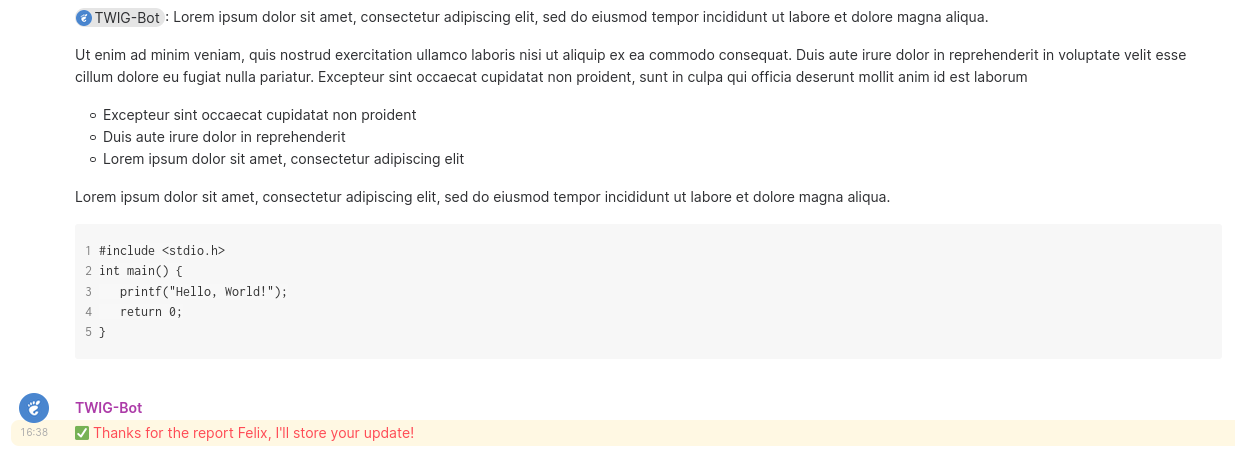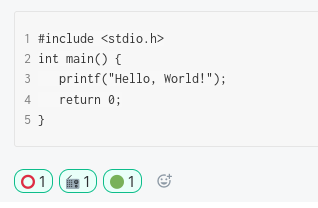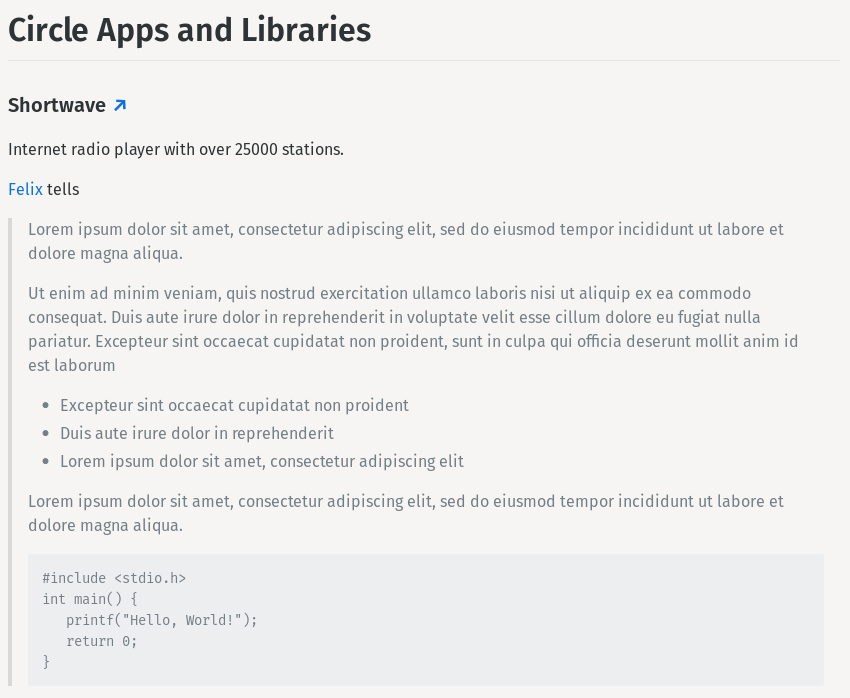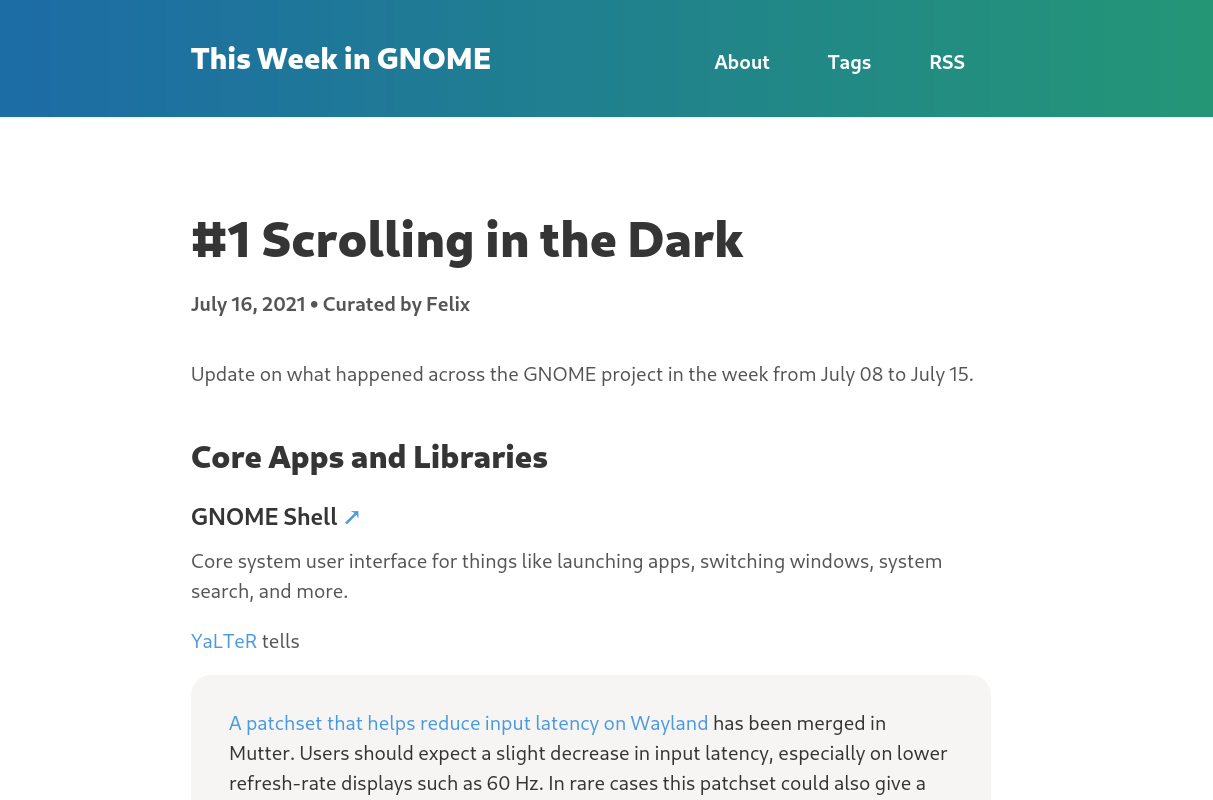For example, the following may be included in a weekly summary:
-
- Presentation of new projects
- New features
- Instructions / Tutorials
- Conferences / Meetings
- General interesting thoughts that might be of public interest
- … and much more! Just scroll through the Matrix blog and you”ll understand the principle very quickly.
After discussing the idea with other GNOME members, and agreeing that this is an idea with great potential, I started to implement the necessary technical requirements.
➞ This Week in GNOME: #1 Scrolling in the Dark
Read through the blog post – it’s full of exciting news,
How does it work?
A user sends a message in the TWIG matrix room, mentioning the bot at the beginning of the message:

The bot will automatically recognize this message, and save it. In order for this message to appear in the next summary, it must be approved by an editor. This is done by adding the “⭕️” emoji (only editors have this permission).
Likewise, editors can add messages to a specific section, or to a specific project.

In this example I have done the following
-
- ⭕️: I have approved this message.
- 📻️: I have added the project description “Shortwave” to this message
- 🟢: I have added this message to the “Circle Apps” section.

All collected messages with related information will be summarized in a markdown document. This can be used to create a new blog post using Hugo for example.
The message shown above would result in the following (raw markdown preview using Apostrophe):

The technical basis for this is hebbot – a matrix bot I developed in Rust using the matrix-rust-sdk. I tried to make this bot as generic and adaptable as possible, so that other communities can reuse it.
There have already been failed attempts to do monthly summaries, so why should it work with a weekly rhythm?
-
- The time period is too long. A lot happens in one month. The longer the period, the more difficult (and time-consuming!) it is to summarize what has happened. Do you remember what you did in detail during this month? No? Neither do I.
- Someone had to prepare the information so it could be shared in the form of a blog post. Either a central editor does this, or the submitter does it themselves. Either way, it’s a tedious and time-consuming process that many people don’t want to do.
TWIG has the following advantages here:
-
- It’s super easy and quick to share news. You just need to open your chat client and send a short message to the TWIG room. You just finished a new feature on your project? Send a short (!) message about it, so that it will appear in the next weekly summary. A few words and maybe a screenshot/video are totally sufficient, no need to write a detailed blog post!
- The administrative workload is very low. An editor only has to approve and categorize the messages, the bot does the rest completely automatically.
Let’s show the world together what we do!
I’ve been involved in the GNOME project for quite some time now, and can say from personal experience that an outsider has absolutely no idea how much valuable work is being done behind the scenes.
-
- Give the community the opportunity to share information with a large mass. GNOME Foundation members have access to the WordPress infrastructure, but there are many members who are not part of the Foundation. For TWIG, in principle, information can be shared by anyone, no matter who, as long as it is relevant to GNOME and newsworthy.
- News first hand. We all know what happens when news / information gets out to the public via 5 different detours. Most of the time important information is lost or distorted. With TWIG there is a reliable and central source of truth.
- Attract interested people / newcomers. The more people become aware of something / see what is happening, the more interest there will be.


You’re talking about a previously existing monthly summary, but it’s worth noting there was also https://blogs.gnome.org/commitdigest/ which was weekly as well.
Interesting – didn’t know that! Maybe we can include some auto generated statistics (like projects with the most commits in a week) in TWIG too.
This was really missing, thanks for working on this! I also read the This Week in Matrix posts and they help me to stay up to date 🙂
Thanks man for this. (Little bit late)